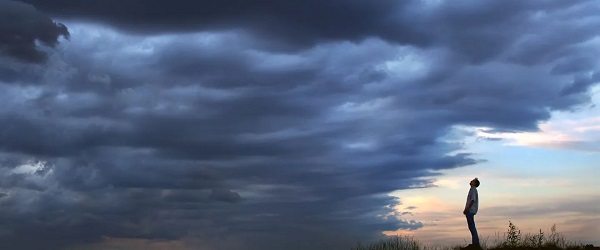Economy
Natural gas key to withstanding winter and Ottawa’s assault

From the Fraser Institute
Mother Nature has reminded everyone that the stakes in the battle to preserve and expand Alberta’s natural gas power production are very high—basically, life or death.
Last week’s polar vortex drove temperatures into record negative territory across western Canada. Nighttime temperatures in Alberta, for example, reached -51 degrees Celsius at Keg River. Without sufficient power for running the heat on high, these are killing temperatures. Demand for electricity in Alberta soared, pushing the power grid toward potential need for rolling blackouts. Only voluntary cutbacks in electricity use by Albertans allowed the system to avoid curtailment.
What did the grid look like last week?
On Jan. 13, according to one report, natural gas generated 80.5 per cent of power on Alberta’s grid followed by coal (7.9 per cent), biomass (2.9 per cent), hydropower (2.5 per cent), solar power (1.3 per cent) and wind (0.99 per cent). But wind and solar’s low combined output was not the major cause of Alberta’s energy crunch last week—two of Alberta’s natural gas power plants were down for maintenance and not generating what they otherwise would have.
And yet, while gas and coal combined produced nearly 90 per cent of Alberta’s life-saving electricity, these fuels remain in the crosshairs of Ottawa and the Trudeau government’s proposal that greenhouse gas (GHG) emissions from electricity production in Canada must decline to “net zero” by 2035.
In the battle over the Trudeau government’s plan, Alberta Premier Danielle Smith argues that Ottawa intends to shut down natural-gas power generation, and because alternatives such as wind and solar power are unaffordable, Alberta will be unable to generate sufficient electricity for Albertans. Meanwhile, federal Environment Minister Steven Guilbeault denies that Ottawa wants to end fossil fuel use and argues that his government’s proposed regulations already allow for natural gas power production, so long as GHG emissions are “mitigated” via carbon capture and storage. Even unmitigated natural gas power would be allowed in emergency situations, according to Guilbeault, who recently accused Premier Smith of “trying to tear Canada down.”
Guilbeault’s argument, however, rests on what he likely knows is a false hope—that carbon capture and storage technology will evolve and be deployed at sufficient speed and capacity to allow Alberta to attain the net-zero emission target by 2035. This is highly unlikely. Carbon capture and storage has many critics including the International Energy Agency (IEA), which recently published a report suggesting that carbon capture and storage is inadequate for capturing carbon dioxide at the scale necessary to reach net-zero emissions by 2035 or beyond. Fatih Birol, executive director of the IEA, threw cold water on the idea, saying the oil and gas industry must help the “world meet its energy needs and climate goals—which means letting go of the illusion that implausibly large amounts of carbon capture are the solution.”
The potential peril of power outages during a polar vortex shows the importance of ensuring that Alberta has a reliable dispatchable electrical generation capacity able to meet even extreme demand. Wind and solar power, favoured under the Trudeau government’s proposed clean electricity regulations, can’t supply that. Premier Smith is right to bank on natural gas generation for Alberta’s future, and she should stand fast. As remaining coal power plants are closed, natural gas will be the foundation of Alberta’s energy stability and it must be defended.
Author:
Business
The great policy challenge for governments in Canada in 2026

From the Fraser Institute
According to a recent study, living standards in Canada have declined over the past five years. And the country’s economic growth has been “ugly.” Crucially, all 10 provinces are experiencing this economic stagnation—there are no exceptions to Canada’s “ugly” growth record. In 2026, reversing this trend should be the top priority for the Carney government and provincial governments across the country.
Indeed, demographic and economic data across the country tell a remarkably similar story over the past five years. While there has been some overall economic growth in almost every province, in many cases provincial populations, fuelled by record-high levels of immigration, have grown almost as quickly. Although the total amount of economic production and income has increased from coast to coast, there are more people to divide that income between. Therefore, after we account for inflation and population growth, the data show Canadians are not better off than they were before.
Let’s dive into the numbers (adjusted for inflation) for each province. In British Columbia, the economy has grown by 13.7 per cent over the past five years but the population has grown by 11.0 per cent, which means the vast majority of the increase in the size of the economy is likely due to population growth—not improvements in productivity or living standards. In fact, per-person GDP, a key indicator of living standards, averaged only 0.5 per cent per year over the last five years, which is a miserable result by historic standards.
A similar story holds in other provinces. Prince Edward Island, Nova Scotia, Quebec and Saskatchewan all experienced some economic growth over the past five years but their populations grew at almost exactly the same rate. As a result, living standards have barely budged. In the remaining provinces (Newfoundland and Labrador, New Brunswick, Ontario, Manitoba and Alberta), population growth has outstripped economic growth, which means that even though the economy grew, living standards actually declined.
This coast-to-coast stagnation of living standards is unique in Canadian history. Historically, there’s usually variation in economic performance across the country—when one region struggles, better performance elsewhere helps drive national economic growth. For example, in the early 2010s while the Ontario and Quebec economies recovered slowly from the 2008/09 recession, Alberta and other resource-rich provinces experienced much stronger growth. Over the past five years, however, there has not been a “good news” story anywhere in the country when it comes to per-person economic growth and living standards.
In reality, Canada’s recent record-high levels of immigration and population growth have helped mask the country’s economic weakness. With more people to buy and sell goods and services, the overall economy is growing but living standards have barely budged. To craft policies to help raise living standards for Canadian families, policymakers in Ottawa and every provincial capital should remove regulatory barriers, reduce taxes and responsibly manage government finances. This is the great policy challenge for governments across the country in 2026 and beyond.
Business
Dark clouds loom over Canada’s economy in 2026

From the Fraser Institute
The dawn of a new year is an opportune time to ponder the recent performance of Canada’s $3.4 trillion economy. And the overall picture is not exactly cheerful.
Since the start of 2025, our principal trading partner has been ruled by a president who seems determined to unravel the post-war global economic and security order that provided a stable and reassuring backdrop for smaller countries such as Canada. Whether the Canada-U.S.-Mexico trade agreement (that President Trump himself pushed for) will even survive is unclear, underscoring the uncertainty that continues to weigh on business investment in Canada.
At the same time, Europe—representing one-fifth of the global economy—remains sluggish, thanks to Russia’s relentless war of choice against Ukraine, high energy costs across much of the region, and the bloc’s waning competitiveness. The huge Chinese economy has also lost a step. None of this is good for Canada.
Yet despite a difficult external environment, Canada’s economy has been surprisingly resilient. Gross domestic product (GDP) is projected to grow by 1.7 per cent (after inflation) this year. The main reason is continued gains in consumer spending, which accounts for more than three-fifths of all economic activity. After stripping out inflation, money spent by Canadians on goods and services is set to climb by 2.2 per cent in 2025, matching last year’s pace. Solid consumer spending has helped offset the impact of dwindling exports, sluggish business investment and—since 2023—lacklustre housing markets.
Another reason why we have avoided a sharper economic downturn is that the Trump administration has, so far, exempted most of Canada’s southbound exports from the president’s tariff barrage. This has partially cushioned the decline in Canada’s exports—particularly outside of the steel, aluminum, lumber and auto sectors, where steep U.S. tariffs are in effect. While exports will be lower in 2025 than the year before, the fall is less dramatic than analysts expected 6 to 8 months ago.
Although Canada’s economy grew in 2025, the job market lost steam. Employment growth has softened and the unemployment rate has ticked higher—it’s on track to average almost 7 per cent this year, up from 5.4 per cent two years ago. Unemployment among young people has skyrocketed. With the economy showing little momentum, employment growth will remain muted next year.
Unfortunately, there’s nothing positive to report on the investment front. Adjusted for inflation, private-sector capital spending has been on a downward trajectory for the last decade—a long-term trend that can’t be explained by Trump’s tariffs. Canada has underperformed both the United States and several other advanced economies in the amount of investment per employee. The investment gap with the U.S. has widened steadily since 2014. This means Canadian workers have fewer and less up-to-date tools, equipment and technology to help them produce goods and services compared to their counterparts in the U.S. (and many other countries). As a result, productivity growth in Canada has been lackluster, narrowing the scope for wage increases.
Preliminary data indicate that both overall non-residential investment and business capital spending on machinery, equipment and advanced technology products will be down again in 2025. Getting clarity on the future of the Canada-U.S. trade relationship will be key to improving the business environment for private-sector investment. Tax and regulatory policy changes that make Canada a more attractive choice for companies looking to invest and grow are also necessary. This is where government policymakers should direct their attention in 2026.
-

 Business2 days ago
Business2 days agoVacant Somali Daycares In Viral Videos Are Also Linked To $300 Million ‘Feeding Our Future’ Fraud
-

 Energy1 day ago
Energy1 day agoThe U.S. Just Removed a Dictator and Canada is Collateral Damage
-

 Haultain Research1 day ago
Haultain Research1 day agoTrying to Defend Maduro’s Legitimacy
-

 International2 days ago
International2 days ago“Captured and flown out”: Trump announces dramatic capture of Maduro
-

 International2 days ago
International2 days agoTrump Says U.S. Strike Captured Nicolás Maduro and Wife Cilia Flores; Bondi Says Couple Possessed Machine Guns
-

 International1 day ago
International1 day agoU.S. Claims Western Hemispheric Domination, Denies Russia Security Interests On Its Own Border
-

 International1 day ago
International1 day agoUS Justice Department Accusing Maduro’s Inner Circle of a Narco-State Conspiracy
-

 International1 day ago
International1 day ago“It’s Not Freedom — It’s the First Step Toward Freedom”












